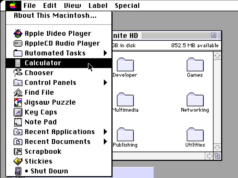
At some point in your gardening journey, high on the first tomato you grew yourself, you will embrace the idea of starting your own flowers and vegetables from seeds. It’s just a small step on your way to full-on homesteading, right? There are plenty of good reasons to go out on your own, seed-ly speaking. You can choose your own varieties, instead of what the nursery offers, and get your starts when you want them, rather than when they’re available. You consider all the money you’ll save buying starts (I’ll be dispelling this gardening math myth in a bit). Seriously, what could give the same sense of self-satisfaction as growing everything on your own? But before diving headlong into setting up a seed station of your own, you might want to wait a few years into home gardening to start.
Starting your own seeds isn’t free
Like all endeavors, setting yourself up to grow seeds on your own has some overhead: You’ll need trays to grow the seeds in, domes, heat mats, lights, fertilizer, and the seeds themselves. Even once you’ve gotten all of that together, there are still soft costs year to year: seed starting medium, pots to transition the plants to before they can go outside (up-potting) but have outgrown the seed starting tray, potting mix for those pots, fertilizer, water and electricity. Some seeds, like tomatoes, can last years, while others, like alliums, will need to be replaced every year. Seeds are decidedly un-cheap these days, depending on what you’re buying and where you buy them. All of this math assumes you have no germination failure, which is almost guaranteed. In any given year, I still have to buy a few starts at the nursery to backfill.
At scale, of course, growing on your own can make sense over time. But for small home gardeners, even as starts climb in price due to inflation, it may be worth it to continue to buy starts. During first few years of seed starting, I used to joke that I grew $30 tomatoes.
Seed buying is highly addictive
If you thought buying makeup, tools, sports gear or Pokemon cards was addictive, let me introduce you to seeds. Every year, breathtaking pictures of perfect flowers, vegetables and herbs will tempt you via email, social media and the mail. Every year, new and somehow better, more evolved varieties of seeds promise to grow taller, more colorful, more productively, and more deliciously. You can tell the meter of a gardener by how large their seed organization box is. At the end of every season, I swear on my life I’ve narrowed it down to the 10 varieties of tomatoes I will grow next year based on this year’s success. Ten, no more. Spoiler: I have never grown fewer than 20 because I am weak of resolve and live in constant search of the perfect paste tomato.
Seed starting requires space
Growing all these seeds is going to take space. You’re likely going to grow in what’s called a 1020 tray, which is, sensibly, 10 inches by 20 inches. They take up space horizontally: Each of these will need to sit on a heat mat to germinate. They also take up space vertically, since they need dome lids on them to preserve the humidity needed to germinate, and for the plants themselves to grow. Above them you’ll need grow lights, and a small plant grow light is not going to cut it—you’re trying to trick seeds into believing they’re in the sun. All of this needs to take place inside, since you’re usually growing these starts long before it’s warm enough to do so outside. Even those with greenhouses generally heat them for the purpose of seed starting; the plastic on the greenhouse isn’t enough to get seeds warm enough to germinate until later in the season.
Once the starts have been up-potted, they take up even more vertical and horizontal space. Even in the off season, you have to store all the equipment for seed starting, which takes up a sizable amount of space.
Growing seeds is time-consuming
The entire process of seed growing takes up a lot of time, and much of that is physical labor. Each year, growing equipment has to be cleaned and sterilized, and then you have to make soil blocks or fill trays with soil starting medium. More time than you can imagine is spent just planning which seeds will go into which tray, and then actually planting those seeds, each of which is at a different depth. Daily, you need to check the light, heat and moisture levels, and water your seeds. At some point you begin fertilizing, and training them—tomatoes needs to be thinned, some flowers need to be pinched, onions need to be chopped back to encourage strong stems and root growth. When it’s time to up-pot these seedlings into bigger pots, that takes time, space and a lot of work to move and label everything. If you find pests or disease in your seeding space, which is likely to happen sometime, you’ll spent a lot of time monitoring, culling and thinning to save what you can.
I have, I believe, economized the process as much as possible, and it still takes up an extraordinary amount of time. Forget about going out of town, because it’s unlikely you’ll find someone who can take care of your seedlings while you’re gone the way you would, and you’re risking losing your entire crop. Things can go sideways quite quickly when your plants are this small and vulnerable.
Seed starting has a long learning curve
Like me, you might imagine that seed starting on your own is just a short leap to saving your own seeds, and closing the loop in your manic pixie homesteading dreams. The truth is that even with all the right equipment, realistic time and space expectations and letting go of the idea of saving money, it is still hard to start your own seeds at first. Every single type of seed has different requirements, sometimes even within the same species. Determinant tomatoes should be started at a different time than indeterminate, because of their different grow types and harvest methods. Some seeds require cold stratification first, or will only grow in darkness. Different seeds get planted at very different depths, and have to be started at different times. You start your eggplants and tomatoes long, long before you start your corn, for instance. Some plants don’t enjoy being transplanted, so you need to do so early. You can’t transplant really mature corn, for instance, so sow it outside, or start it inside, about two weeks before you plan to put it in the ground.
Nursery plants have survived it all, already
A few years ago, I enjoyed my first truly successful seeding season. I had managed to get hundreds of vegetables and flowers through germination, had not suffered from disease or pests, and had up-potted them into carefully labeled four-inch pots. Tomatoes and peppers gorgeously grew about 12 inches tall. I had started to transition them to the outside, a process called hardening off, and that, too, had gone fine. I left them out for the first overnight, May 2. I woke up went to go check on them and rubbed my eyes like a cartoon character at the blanket of unexpected snow that had buried every single one of them.
The reality is, only a small percentage of plants you grow will make it through. There will be aphids and mosaic virus along the way, and it’ll take you a few years to become hardened enough to be able to immediately toss an entire tray of plants out immediately if they show signs of anything they could contaminate the others with. After all that investment, it’s entirely possible to lose part of what you’ve grown, or all of it. Meanwhile, nursery starts are the plants that have made it though, saving you a lot of time and heartbreak.
Why you’ll do it all anyway
Despite the cost, the heartache, the physical work and the lack of vacations during gardening season, if you can get past everything I’ve just said, it may be time to start trying to grow some seeds of your own. The biggest mistake I see people make is to try to do it all at once. They try to start seeds the same year they start their garden, and it’s just too many different aspects of gardening to pick up all at once. The first few years, buy starts at a nursery, and if that’s all you ever do, there’d be no shame in that game. Providing these starts to nurseries keep farmers across America employed.
If you do decide you’re ready, growing your own plants from seed can be tremendously rewarding. Every single part of the process, from making soil blocks to sorting seeds, up-potting and talking to your plants every morning is deeply satisfying. I don’t think there are drugs on the black market that can feel as good as walking around your garden in June, surrounded by plants you grew yourself from seed.








